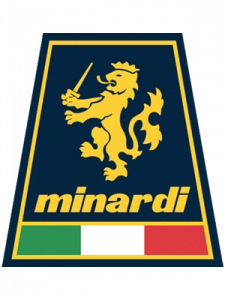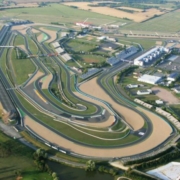F1 – Magny Cours: L’analisi tecnica dell’Ing. Tredozi
Dopo la prima e storica doppietta del team BMW Sauber F1 e del podio della Red Bull con lo scozzese David Coulthar nel gran premio di Canada, il circus della F.1 è pronto a rianimare nuovamente il fine settimana di tutti i fans sparsi per il mondo: teatro dell’ottava tappa del Mondiale sarà la Francia e la scenografia il tracciato di Magny Cours.
L’ingegnere Gabriele Tredozi, colonna portante del Minardi Team, analizza il circuito della Nièvre. “Il tracciato di Magny Cours presenta un asfalto molto liscio e questo ti permette di avere una macchina molto bassa, anche 2-3 mm in meno rispetto agli altri tracciati. Ancora una volta andiamo a correre su una pista in cui la trazione è un aspetto molto importante in quanto ci sono diversi allunghi seguiti da curve lente. Ad esempio le curve 2 e 3 (Grande courbe e la Estoril) sono molto veloci e dopo il lungo rettilineo si arriva all’Adelaide, la curva più lenta di tutto il tracciato. Successivamente i piloti sono chiamati ad affrontare due “S” velocissime, la Nurburgring e Imola, spezzate da una sinistra medio-lenta. Proprio per questo è fondamentale trovare il giusto compromesso tra i settori veloci e quelli lenti.

Altro aspetto da tenere in considerazione quando si studia il bilanciamento della macchina è avere una vettura agile, che permetta al pilota di saltare sui cordoli, come potrà succedere proprio alla “Chicane”, l’ultima “S” prima della “Lycee” che immette sul rettilineo finale.
Rispetto al Canada, Magny Cours non è un tracciato di freni, in quando sono poco sollecitati. In base a queste analisi si tende ad utilizzare un carico aerodinamico medio-alto e, a mio avviso, è una pista molto difficile, sia per il pilota sia per i tecnici che devono studiare il bilanciamento ottimale. In aggiunta per questo fine settimana sono attese temperature molto alte.
Dopo sette gran premi il campionato piloti e costruttori è tutt’altro che un capitolo chiuso, infatti per la prima volta dopo tanti anni troviamo al comando un pilota che indossa una casacca diversa da quella rosso Ferrari e argento McLaren: il leader è un polacco al volante di una monoposto tedesca, Robert Kubica con la sua BMW numero 4.

After the first and historic double team BMW Sauber F1 and Red Bull podium with the Scottish David Coulthar in the Grand Prix of Canada, the F1 circus is ready to revive again the weekend of all the fans around the world : Theatre stage of the Eighth World will be France and the scenery of the route Magny Cours.
The engineer Gabriele Tredozi, backbone of the Minardi Team, analyzes the circuit of Nièvre. “The planned route of Magny Cours presents a very smooth asphalt and this allows you to have a machine very low, even 2-3 mm less than the other tracks. Once again we are going to run on a track where traction is very important because there are different lengthen followed by slow corners. For example curves 2 and 3 (Grand courbe and Estoril) are very fast and after the long straight to get there all’Adelaide, the curve slower across the path.
After that the pilots are faced with two fast “S”, the Nurburgring and Imola, from a broken left medium-slow. Precisely for this reason it is essential to find the right compromise between sectors fast and slow.
Another aspect to consider when you study the balance of the machine is to have a car agile, which allows the pilot to jump on kerbs, as may happen to their “Chicane”, the last “S” before the “Lycee” who places on the final straight.
Compared to Canada, Magny Cours is not a trace of brakes, just when they are solicited. Based on these analyses tend to use an aerodynamic load medium-high and, in my opinion, is a track very difficult, for both the pilot and for the technicians who must study the optimal balance. In addition to this weekend are expected very high temperatures.
After seven Grand Prix the championship drivers and constructors is very open and uncertain, in fact for the first time after so many years to find a command pilot wearing a casacca other than the red Ferrari and McLaren silver: the leader is a Polish at the wheel of a German car, Robert Kubica with his BMW number 4.



